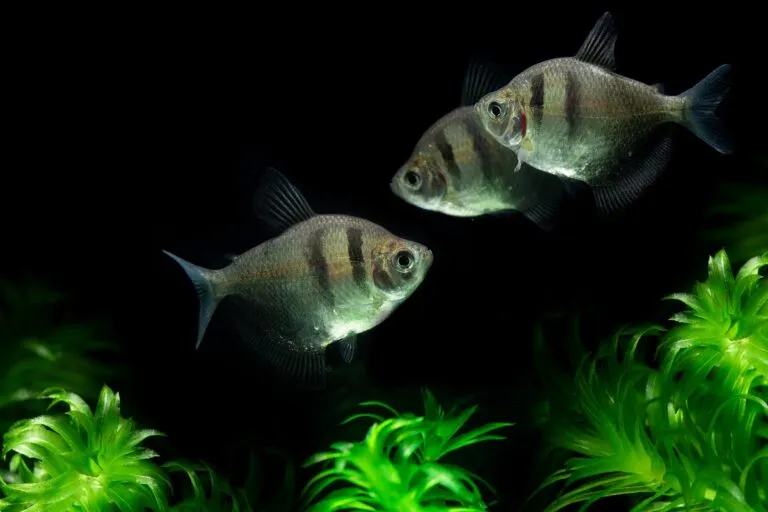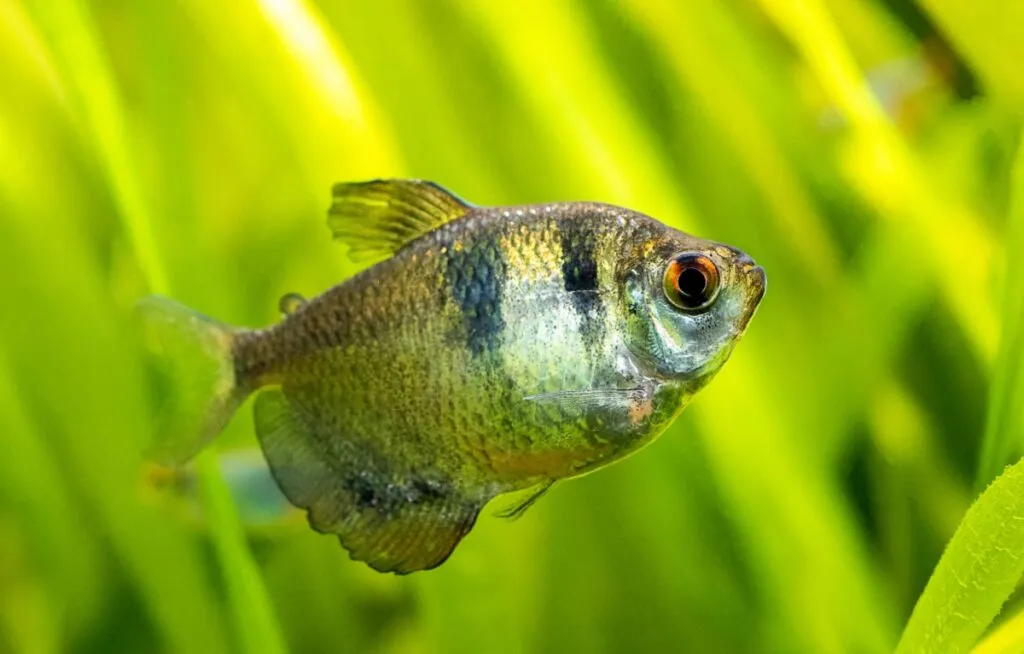As an easy-to-care-for fish, black skirt tetras are very suitable for beginners opting for a community aquarium. However, individual requirements of this fish species should be considered to ensure your fish remain happy and healthy long term.
Size of the aquarium
To ensure your active swimmers have enough space, the aquarium should have a minimum capacity of 112 litres. An 80 centimeters length is recommended.
Ideal water values
Black skirt tetras are generally robust when it comes to water hardness in the aquarium.
The following water values should be maintained in the aquarium:
- Water hardness: ideally up to 10° dGH, 5 to 20° dGH possible
- pH value: 6 to 8
- Temperature: 20 to 28 °C
Planting and substrate
Black skirt tetras love hiding places, so the aquarium should have some areas with dense but loose planting. Plant some floating plants to protect your shade-loving fish from bright light.
Dark substrate is suitable as a substrate.

